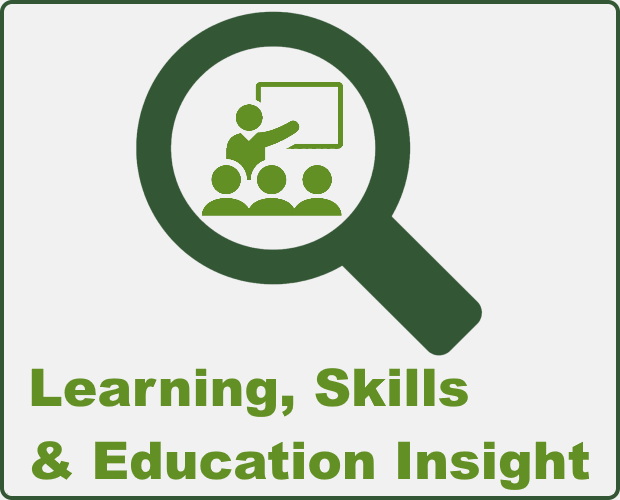Widen Your Educational Horizons through School Drillers Education Insight
Widen Your Educational Horizons through School Drillers Education Insight
Blog Article
The Duty of Education And Learning in Building a Comprehensive Educational Site for All
The duty of education in developing a detailed educational website for all is progressively recognized as necessary in today's diverse society. By prioritizing inclusivity and leveraging innovative mentor approaches along with innovative modern technology, instructors can develop an environment that fulfills the diverse requirements of learners. Fostering partnership with regional neighborhoods enhances the support network critical for student success. Nevertheless, the concern continues to be: just how can we effectively gauge the success and influence of these efforts to guarantee they meet their intended function? This inquiry invites more exploration into the dynamics of academic equity and effectiveness.
Relevance of Inclusivity

When academic sites prioritize inclusivity, they produce a culture of belonging where every student really feels valued and encouraged. This atmosphere encourages energetic participation, cooperation, and common regard among learners, promoting more powerful social partnerships. In addition, comprehensive practices add to enhanced academic end results, as trainees are more probable to engage with the educational program when they see their identifications reflected and valued.
Furthermore, inclusivity prepares pupils for a diverse labor force and culture, equipping them with the abilities required to browse and contribute favorably to varied atmospheres. By embracing inclusivity, academic websites not only accomplish their ethical obligations yet also enhance the instructional landscape, eventually profiting students, teachers, and the area at large. Fostering inclusivity is necessary for the advancement of equitable and efficient education and learning.
Leveraging Modern Technology for Knowing
Integrating modern technology into instructional websites enhances inclusivity by offering diverse understanding tools and resources customized to specific needs. Digital platforms permit the combination of multimedia sources, such as video clips, interactive simulations, and gamified finding out experiences, which accommodate varying learning styles. This availability makes certain that learners can engage with content in manner ins which resonate with them, promoting a deeper understanding of topic.
Additionally, modern technology promotes real-time feedback and customized knowing pathways. With adaptive knowing innovations, academic sites can evaluate private performance data, allowing tailored content delivery that meets each learner's pace and effectiveness degree. This strategy not just improves interaction however additionally encourages trainees to take ownership of their knowing journey.

Ingenious Training Methods

One prominent approach is project-based knowing (PBL), which urges students to take part in hands-on jobs that deal with complex inquiries or difficulties. This approach cultivates cooperation, imagination, and analytic skills, all of which are important in today's labor force. Turned class have actually gained grip, where standard learning is turned around; pupils review lecture materials at home and engage in interactive activities throughout class time, advertising much deeper understanding and retention.
Another substantial trend is the combination of gamification into education and learning. By incorporating game aspects right into lessons, educators motivate learners and improve engagement through competition and incentives. Furthermore, distinguished guideline tailors discovering experiences to fulfill the diverse requirements of trainees, allowing for customized understanding paths that adapt to varying rate of interests and capacities.
Cooperation and Community Building
Often, cooperation and community building are acknowledged as crucial components of effective education, cultivating a comprehensive and supportive understanding environment. These elements produce a structure where trainees, instructors, and area participants can involve in meaningful interactions, enhancing the instructional experience for all participants.
Cooperation urges the sharing of concepts, sources, and expertise, helping with a richer knowing process. This dynamic helps to break down silos within the educational community, advertising interdisciplinary approaches that can address complex issues. By collaborating, educators can develop cutting-edge educational programs that mirror varied point of views while satisfying the different needs of pupils.
Area structure goes together with collaboration, as it cultivates a feeling of belonging amongst all stakeholders. When people feel connected to their instructional area, they are more probable to invest time and sources right into collective objectives. This shared dedication can cause increased inspiration, enhanced academic end results, and higher retention rates.
Moreover, cultivating partnership and community structure can also expand past the class, entailing moms and dads, neighborhood companies, and organizations. These partnerships can give assistance and sources that enhance educational possibilities, eventually adding to a much more detailed instructional site for all.
Gauging Success and Effect
The effectiveness of cooperation and neighborhood building in instructional settings can be evaluated via different metrics that gauge view publisher site success and impact. These metrics may consist of pupil interaction degrees, academic efficiency, retention rates, and neighborhood responses. By employing measurable data such as test scores and college graduation rates, academic stakeholders can gauge the general performance of collective campaigns.
Furthermore, qualitative analyses, such as surveys and emphasis groups, offer valuable insights right into participant complete satisfaction and viewed advantages of community-building activities. On a regular basis tracking these metrics allows teachers to recognize areas of stamina and those requiring improvement, making sure that collaborative efforts continue to be focused and impactful.
In addition, longitudinal studies can assist gauge the lasting effects of academic collaborations on student outcomes and neighborhood development. These assessments can disclose trends gradually, highlighting how sustained partnership promotes a setting conducive to learning and advancement.
Eventually, browse around here specifying success in instructional setups requires a multifaceted technique, incorporating both measurable and qualitative information. By continuously assessing the effect of partnership and community-building efforts, instructional websites can improve their approaches, guaranteeing they meet the diverse needs of all stakeholders involved.
Conclusion
In conclusion, education and learning serves as a cornerstone in establishing a thorough academic site that prioritizes inclusivity for all students. Eventually, the dedication to inclusivity and equity prepares pupils for success in a varied and interconnected globe, strengthening the transformative power of education.
The importance of inclusivity in instructional websites can not be overstated, as it plays a crucial duty in promoting a knowing setting that fits diverse histories and capacities. Inclusivity makes sure that all students, no matter of their socio-economic condition, ethnic culture, gender, or discovering capabilities, have fair access to instructional resources and possibilities.When academic websites prioritize inclusivity, they create a culture of belonging where every pupil feels valued and empowered. By accepting inclusivity, educational sites not just satisfy their moral responsibilities yet likewise improve the academic landscape, inevitably benefiting pupils, educators, and the neighborhood at big.The effectiveness of cooperation and community building in instructional settings can be examined through different metrics that gauge success and impact.
Report this page